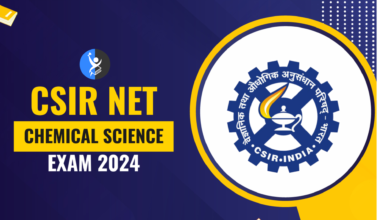How to Visually Represent Maturity Level I

Introduction
Understanding and visualizing the concept of “Maturity Level I” is crucial for organizations aiming to improve their processes. Maturity models are frameworks that help organizations assess their processes, identify gaps, and implement strategies for improvement. “Maturity Level I” is typically the initial stage in most maturity models, representing a starting point with unstructured and often chaotic processes. This article will explore how to visually represent Maturity Level I,
The How of Digital and Analytics in Insurance: The Study Points
What is Maturity Level I?
Maturity Level I, also known as the “Initial” or “Ad-Hoc” stage, is characterized by unorganized and unpredictable processes. At this stage, organizations often lack standardized procedures, resulting in inconsistent performance and outcomes. The focus is primarily on getting tasks done, with little regard for efficiency or repeatability.
The Importance of Visual Representation
Visual representation is a powerful tool for conveying complex information. In the context of Maturity Level I, it helps stakeholders understand the current state of processes and the need for improvement. Visual tools such as flowcharts, mind maps, and maturity grids can simplify the representation of the chaotic nature of this level.
Visual Tools for Representing Maturity Level I
1. Flowcharts
Flowcharts are an excellent way to represent the disorganized nature of processes at Maturity Level I. These diagrams can show the lack of structure by illustrating the erratic flow of tasks. For instance, a flowchart for a process at this level might include numerous decision points, loops, and undefined steps, highlighting the need for standardization.
Example:
Imagine a flowchart representing the process of handling customer inquiries. At Maturity Level I, the flowchart might show that inquiries are handled differently depending on who is managing them, with no clear procedure in place. This visual representation emphasizes the need for a more structured approach.
2. Mind Maps
Mind maps can be used to visually represent the chaotic and unstructured nature of Maturity Level I. By mapping out all the elements involved in a process, a mind map can highlight the lack of coherence and standardization. This tool is particularly useful for identifying the various factors contributing to the disorganization.
Example:
A mind map of a project management process at Maturity Level I might show scattered responsibilities, unclear timelines, and undefined goals. This visual representation can help stakeholders see the need for clearer guidelines and structure.
3. Maturity Grids
Maturity grids provide a comparative visual representation of different maturity levels. By placing Maturity Level I alongside higher levels, organizations can see the gaps and areas for improvement. These grids often include criteria such as process documentation, consistency, and measurement, with Maturity Level I showing minimal or no adherence to these criteria.
Example:
A maturity grid comparing the software development process at different levels might show that at Maturity Level I, there is little to no documentation, and processes are inconsistent. This visual can help teams understand the importance of moving to a higher maturity level.
Key Characteristics of Maturity Level I
When visually representing Maturity Level I, it’s essential to highlight its key characteristics. These include:
- Lack of Standardization: Processes are not documented, leading to inconsistent results.
- Reactive Approach: Actions are often taken in response to immediate needs rather than following a planned process.
- Unpredictable Outcomes: Due to the lack of structure, outcomes are unpredictable, and success is often dependent on individual efforts.
- Minimal Control: There is little to no control over processes, making it difficult to measure performance or make improvements.
The Role of Visual Representation in Process Improvement
Visual representation not only helps in understanding the current state but also serves as a tool for planning improvements. By clearly illustrating the weaknesses of Maturity Level I, visual tools can guide organizations in developing strategies to advance to higher maturity levels.
Moving from Maturity Level I to Level II
Transitioning from Maturity Level I to Level II involves introducing more structured processes. Visual representation can play a crucial role in this transition by providing a clear roadmap. For instance, a flowchart that initially shows a chaotic process can be modified to include standardized steps, demonstrating the shift towards a more organized approach.
Final Thoughts
Visual representation is an invaluable tool for organizations at Maturity Level I. By using flowcharts, mind maps, and maturity grids, organizations can better understand their current state and identify areas for improvement. The chaotic nature of Maturity Level I is challenging, but with the right visual tools, organizations can begin the journey towards higher maturity levels.
Questions and Answers
Q1: Why is it important to visually represent Maturity Level I?
Visual representation helps stakeholders understand the chaotic and unstructured nature of Maturity Level I, making it easier to identify areas for improvement.
Q2: What are some visual tools that can be used to represent Maturity Level I?
Flowcharts, mind maps, and maturity grids are effective tools for visually representing Maturity Level I.
Q3: How can visual representation aid in the transition from Maturity Level I to Level II?
By illustrating the current state and potential improvements, visual representation provides a roadmap for transitioning to more structured processes.
Q4: What are the key characteristics of Maturity Level I?
Lack of standardization, reactive approach, unpredictable outcomes, and minimal control are the key characteristics of Maturity Leve.





